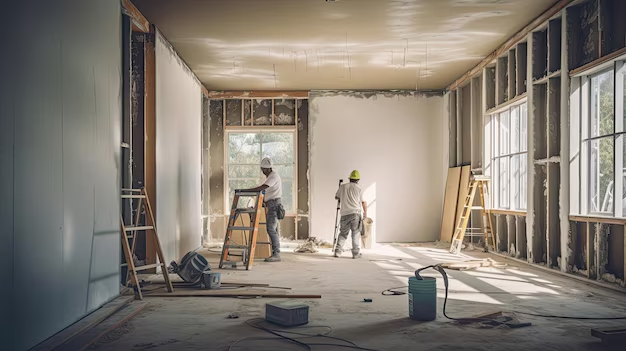The Role of Commercial Strip Outs in Office-to-Residential: A Growing Urban Trend
- Admin

- Jul 4
- 3 min read

The transition from office to residential is redefining cities globally. With remote working becoming the standard and office space vacancy rates increasing, building owners and developers are looking into adaptive reuse schemes. An integral starting point in this process is the commercial strip out the removal of all non-structural items from a current commercial building to ready it for its new existence as residential housing.
Commercial strip-outs are not merely demolition work. They entail planning, meeting building codes, and future residential considerations. The article describes the significance of commercial strip-outs and how they belong to the larger office-to-residential trend.
What Is a Commercial Strip Out and Why Is It Needed for Office-to-Residential Projects?
Commercial strip-out is the process of having all tenant-specific finishes, fixtures, and fittings removed from a commercial property. It involves partitions, ceilings, lighting, floors, and internal services such as plumbing and electrical systems that are not required for a residential fitout. The area needs to be stripped and restored to base building condition before any new fitout work can start.
Strip-outs are a necessity when converting offices into residential property since they give the architect and the builder the ability to begin anew. They eradicate old or inappropriate commercial features and leave them with a clean slate to work with residential design. Strip outs also help to detect any mechanical or structural problems that must be resolved prior to construction.
How Does a Commercial Strip Out Work in Practice?
The strip-out process usually follows these primary steps:
Planning and Permits: Permits and approvals are sought before any work begins. This is to ensure compliance with building codes and local regulations.
Demolition of Fixtures and Fittings: All non-structural fittings and fixtures, including joinery, carpets, suspended ceilings, and partitions, are demolished.
Disconnection of Services: Services, including plumbing, mechanical, and electrical services, are disconnected and demolished unless necessary for the new use.
Waste Disposal: All the rubble is sorted and disposed of in a responsible manner, recycling wherever possible being made a priority wherever possible.
Preparation of the site: The area is left clean and ready for the next stage of construction to proceed.
What Are the Main Challenges of Commercial Strip Outs in Office-to-Residential Conversions?
Commercial strip-outs come with their own set of problems. Some of the most prevalent issues are:
Structural Restrictions: Deep floor plates, unnatural light, and inappropriate layouts complicate the project.
Building Regs and Rules: Residential buildings have other standards for fire safety, ventilation, and accessibility. Pre-existing commercial spaces have to be adapted to conform to these specifications.
Hidden Expenses: Unforeseen problems like asbestos, old wiring, or plumbing issues can increase costs and delays.
Environmental Factors: Proper waste disposal and recycling are essential to reduce the ecological footprint of strip outs.
What Are the Advantages of a Successful Commercial Strip Out?
Cost Savings: Removing and recycling a current building is usually less expensive than building new, particularly if the locality offers incentives or grants.
Sustainability: Adaptive reuse minimises waste and saves resources, providing a more environmentally friendly option than demolition.
Faster Project Timelines: Projects are completed more rapidly since less structural work is involved, assisting with the need to provide urgent housing.
Retention of Urban Fabric: Converting older commercial properties ensures the retention of the special character of city centres and promotes dynamic, mixed-use communities.
Conclusion
Commercial strip outs are a crucial element in the increasing practice of office-to-residential conversion. By readying commercial property for its new residential use, commercial strip outs enable the creation of affordable, environmentally friendly, and lively urban neighbourhoods. To developers and owners of property, a successful adaptive reuse project hinges on a well-designed commercial strip-out.








Comments